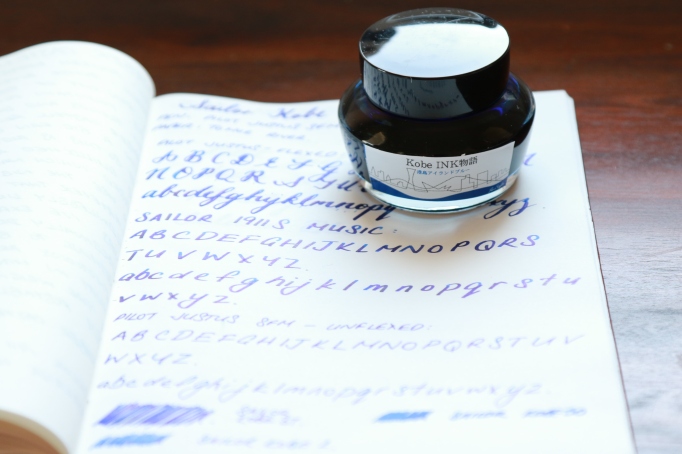
Sailor produces custom lines of ink for different stores and one of these include the line of inks produced exclusively for the Nagasawa pen store in Kobe, Japan. In my (no longer recent) trip to Japan, we did a whirlwind tour of Kobe, which included 2 main destinations – the Kobe museum and the Nagasawa pen store, with the aim of picking up a few of these inks.
The Sailor Kobe line includes 50-odd (and growing) ink colours, in the normal Sailor ink bottle, but without the little plastic insert. I actually prefer the bottle without the insert – I know it’s supposed to help you ink your pen up when there isn’t much ink left in the bottle, but the little thing is too small for slightly bigger pens – including the full size Sailor 1911 (large) which is a bit ironic, considering its their own pen. I tend to transfer a small volume of ink (roughly 6 ml or so) into a little sample vial to prevent contamination when filling and with the insert there, it takes about 3 goes to fill the vial up.
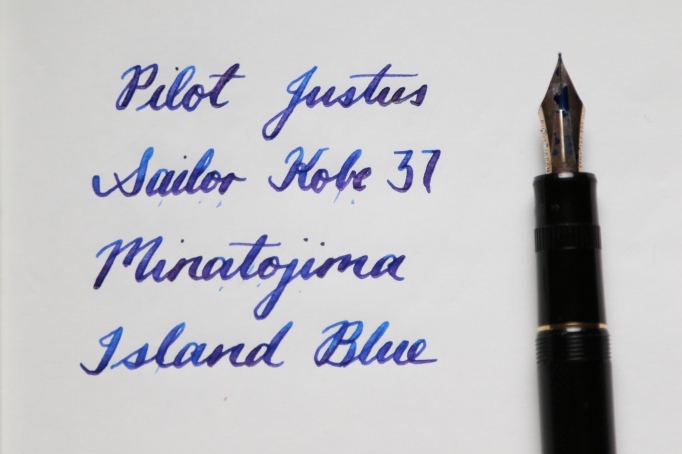
I’m terrible at describing colours, so I will let the pictures speak for it. It is a really bright, royal-ish blue! I like it in wetter pens, as it dries darker. Unlike other Sailor inks I have tried, this one doesn’t seem to have any sheen in the papers I have tried.
I find Sailor inks to be a bit drier – namely in that if you uncap your pen for a period of time, the ink tends to dry and give you hard starts, compared to inks like Iroshizuku which don’t seem to do that. This ink, however, didn’t give me any problems in the two pens I used for this review.
From a cleaning perspective (which in my opinion is the most important, as I am not fond of having to clean pens without much to show for it), it is neither difficult nor easy to clean. In my Sailor music nib, a few flushes and a soak in the Platinum pen cleaning solution (and a few flushes after) did the trick, but in the Justus it was a bit more complicated. But the Justus is always difficult to clean, due to the slide nib adjuster, so I don’t think this complication was the ink’s fault.
Overall, a bit too bright for my tastes but if you want to liven up your day with a work appropriate ink that wouldn’t look out of place in the boardroom, then this could be an option.


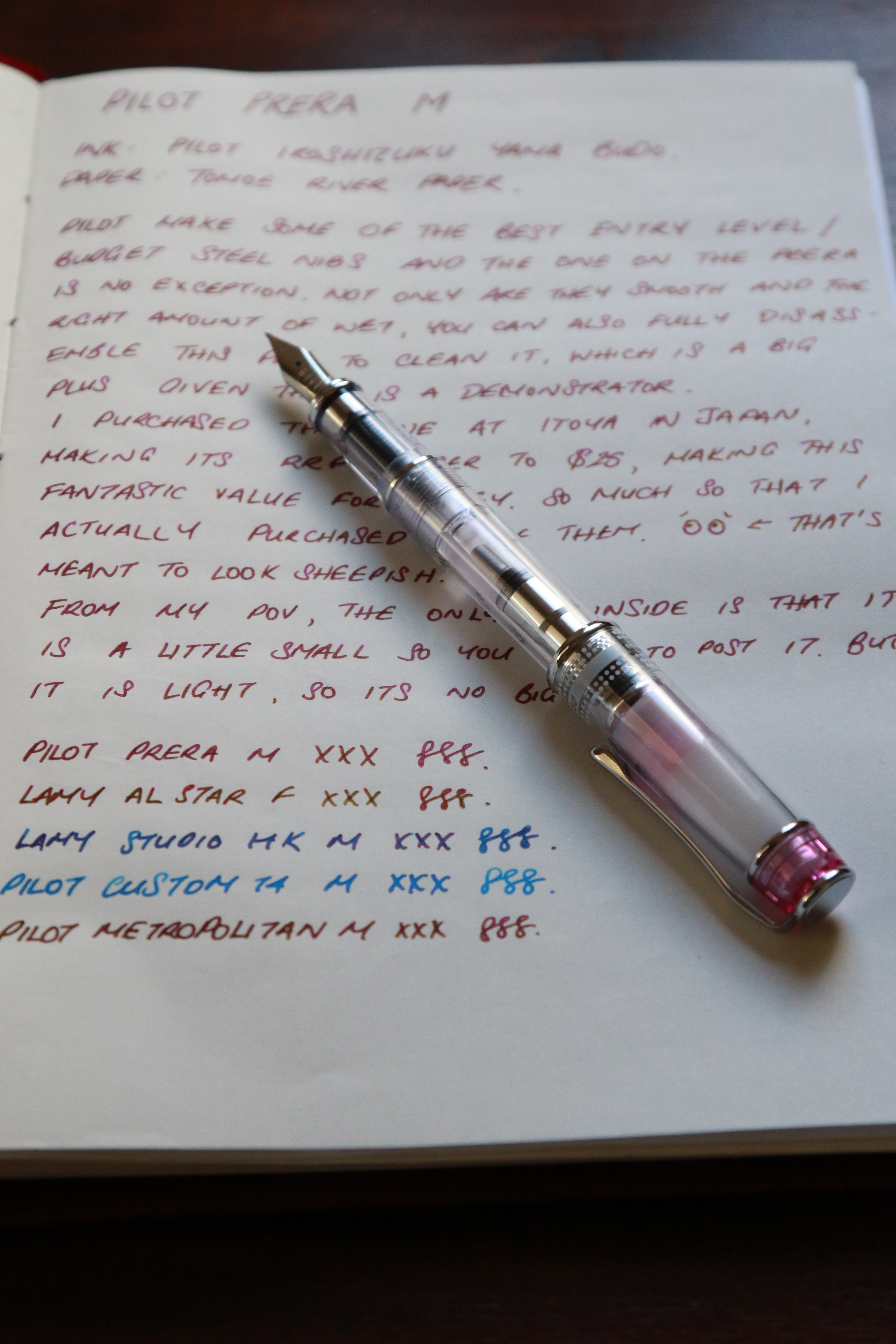
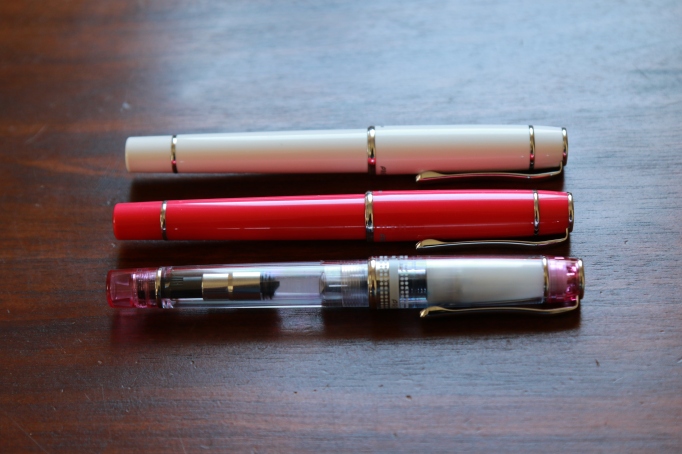
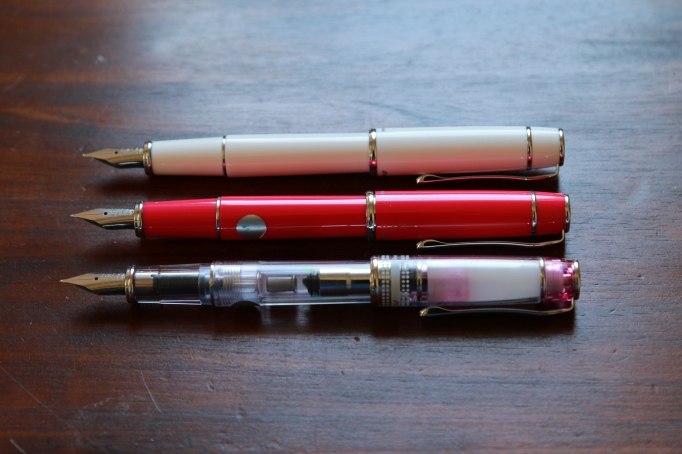

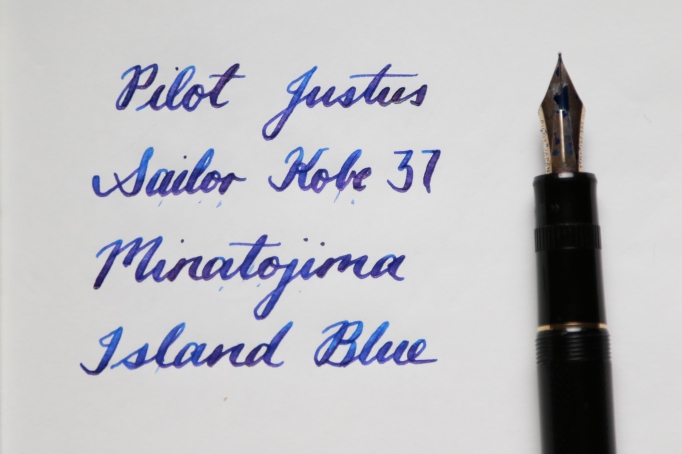 Can you see the faint pink sheen on this ink?
Can you see the faint pink sheen on this ink?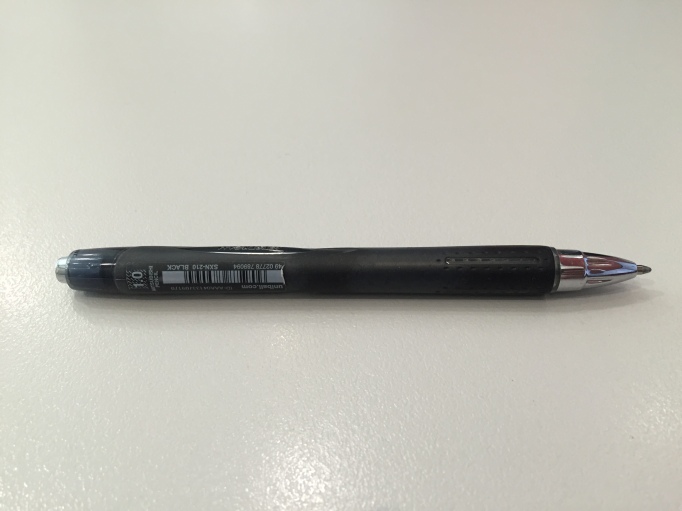 Uni-ball Jetstream 1.0 Retractable (Bold Point)
Uni-ball Jetstream 1.0 Retractable (Bold Point)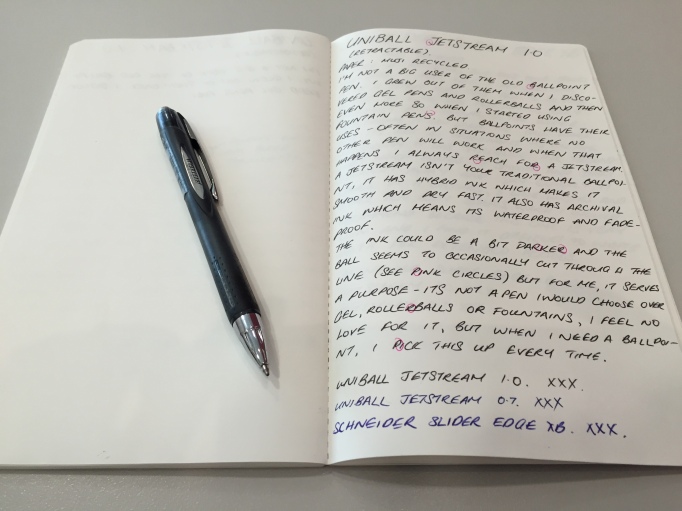
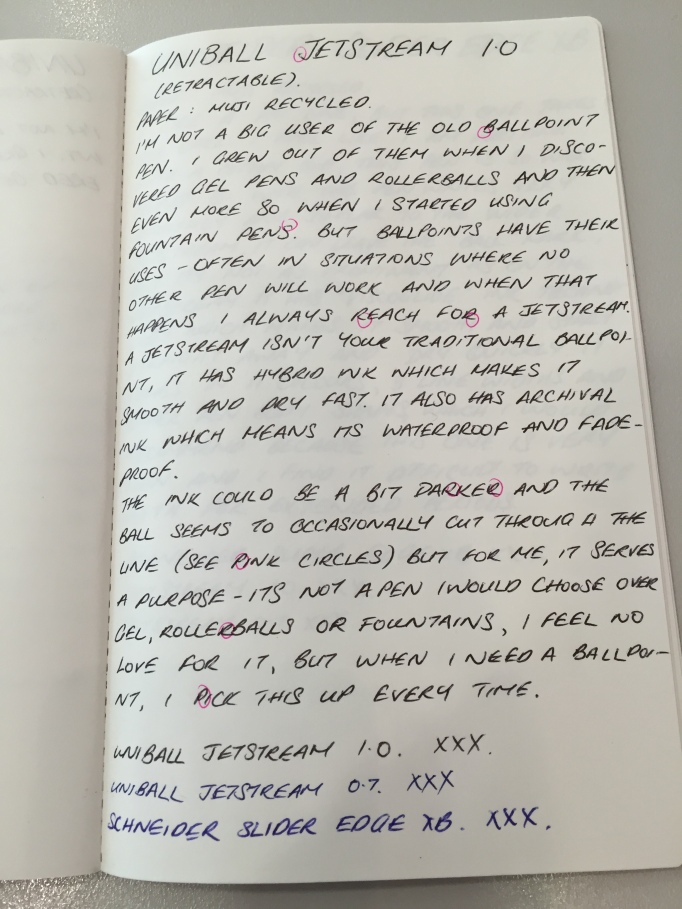
You must be logged in to post a comment.